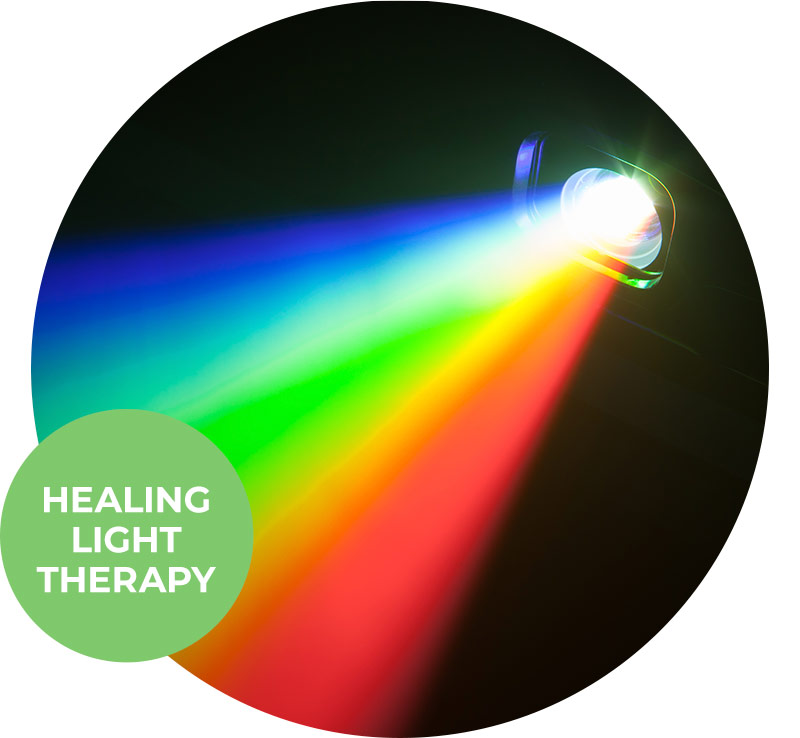Syntonics
Call todayWhat is Syntonics?
After a car accident, our bodies sometimes respond with symptoms such as light sensitivity, anxiety, focusing issues, and other visual impairments. Syntonics, a form of “light therapy,” involves exposing the patient to certain prescribed light frequencies to stimulate biochemistry of the brain. This in turn can help alleviate some of these symptoms as well as improve mood, focus/concentration, and visual field constrictions associated with stress, brain injury, and trauma. Syntonic therapy’s colored lights stimulate the visual system and can help bring balance to the sympathetic (“fight or flight”) and parasympathetic (“rest and digest”) nervous systems.
Less irritability and/or anger
Less anxiety
Less aggression
Better focus and concentration
Improved performance


Proven Results for Over 70 Years
Syntonics or optometric phototherapy, is the branch of ocular science dealing with the application of selected light frequencies through the eyes. It has been used clinically for over 70 years in the field of optometry with continued success in the treatment of visual dysfunctions, including strabismus (eye turns), amblyopia (lazy eye), focusing and convergence problems, learning disorders, and the aftereffects of stress and trauma. In recent years, Syntonics has been shown to be effective in the treatment of brain injuries and emotional disorders.
Interest in the effect of light on the body intensified earlier this century. Most of the current therapeutic techniques used in Syntonics are based on the work done by Dr. Harry Riley Spitler in the 1920s and 1930s. Dr. Spitler, who had both optometric and medical degrees, began researching and using phototherapy in 1909. Spitler, the author of “The Syntonic Principle”, conceived the principles for a new science that he called “Syntonics”. Syntonics, from the word Syntony (to bring into balance), refers physiologically to a balanced, integrated nervous system.
Certain biochemical conditions in the brain need to be present before effective cortical plasticity and new functions can occur. Neurotransmitters trigger this biochemistry and allow for additional synaptic connections to initiate movement and growth in new directions. Colored light therapy can act as a powerful tool to stimulate the biochemistry of the brain through the visual system by way of the retinal-hypothalamus brain connection.
In conjunction with vision therapy, Syntonics can help reverse visual dysfunctions such as:
Strabismus (eye turn)
“Lazy” eyes
Convergence issues
Divergence issues
Focusing issues
Lyme disease
Traumatic Brain Injury
Other neurological diseases and disorders

Schedule a consultation and explore your treatment options.
